6 Standout Booths at Art Cologne 2018
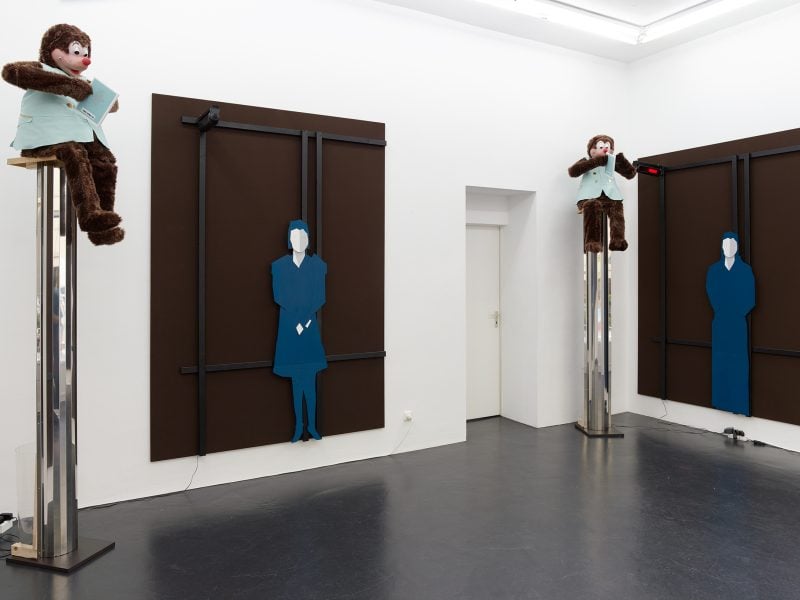

Artnet Gallery Network

The world’s oldest international art fair, Art Cologne, opens to the public today, marking its 52nd edition. With over 2,000 artists on view, there’s plenty to see. Should you make the trip, here are six standout booths from artnet member galleries worth digging into.
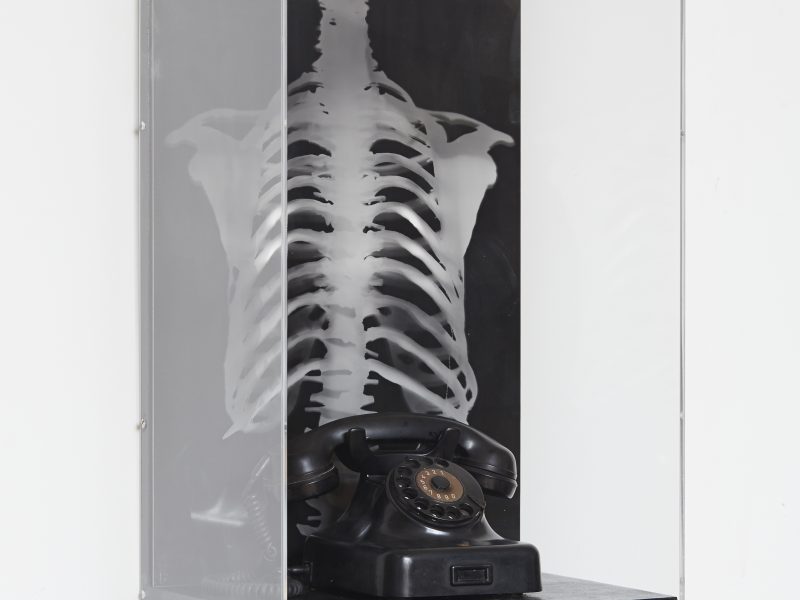
Christian Theiß, Tel. Thorax (2014). Courtesy of Clages.
Cologne’s own Gallery Clages brings a playful presentation to its hometown fair, showing the work of two German artists, Claus Richter and Christian Theiß. Richter’s subject matter is often the art world itself. In elaborate installations, he satirizes the inscrutably “high-brow” objects that pass for contemporary art, and the snooty privilege of those who buy them in the name of cultural capital. Ironically, Theiß’s sculptures, with their juxtaposition of symbols—a telephone positioned in front of a ribcage, for example, or a scale dangling from a femur—and puzzling titles, could pass for that very kind of impervious aestheticism at first glance. However, it complements Richter’s work nicely. The resulting booth feels like a surreal art world dream.
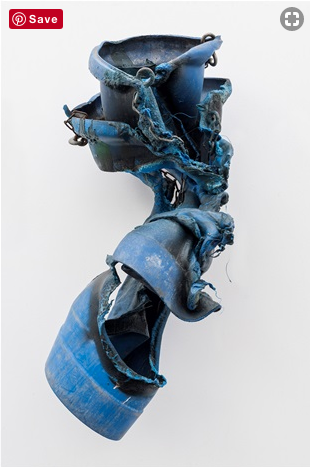
Max Frisinger, Falling Sleeves (double blue) (2017). Courtesy of Galerie Gisela Clement.
Gallery Gisela Clement presents “Falling Sleeves” a solo exhibition of new works by sculptor Max Frisinger. The Bremen-born, Berlin-based artist makes twisted, John Chamberlain-esque steel and polyethylene sculptures from castoff industrial parts. The works at Art Cologne were created by melting trash chutes sourced from construction sites. They are hung by ropes and chains from scaffolding set up in the gallery’s booth—a reflection on the materials, professions, and laborers left behind by our post-industrial society.
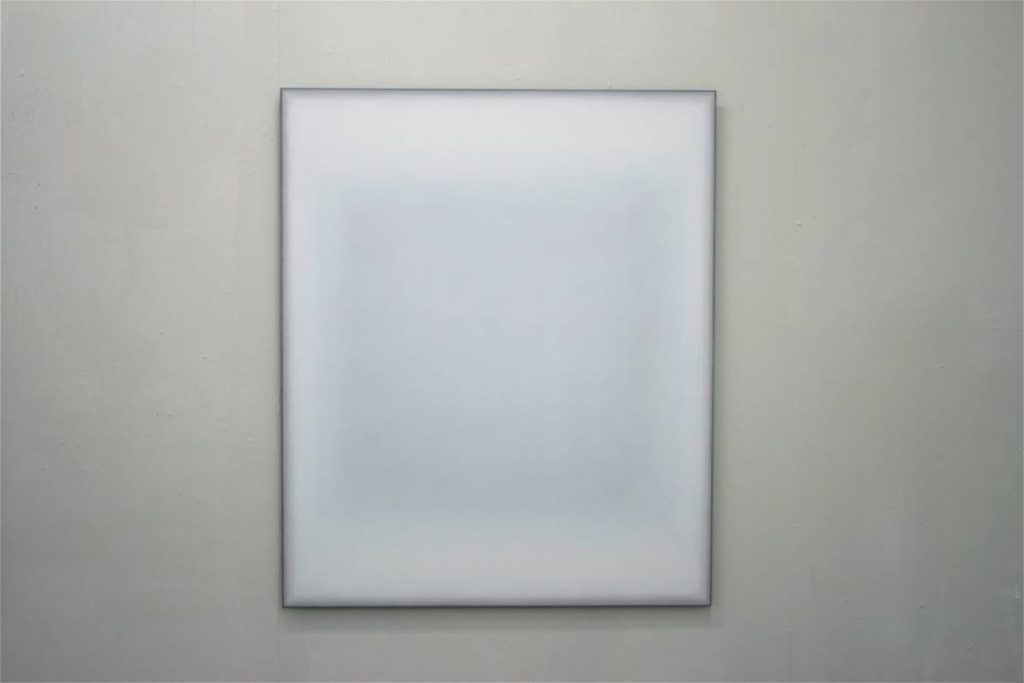
Per Kesselmar, Pale Blue Screen s1 (2018). Courtesy of Galerie Dierking.
Swiss gallery Galerie Dierking specializes in art from and inspired by the ZERO movement. As such, their booth—a minimal, gray affair—is not the flashiest in the building. However, there are several pieces not to miss, especially the work of the newly rediscovered Swedish artist Per Kesselmar. Kesselmar makes oil paintings on a variety of metal substrates—aluminum, steel, brass, and copper. His works are something of a slow burn. They reward long viewings, which is appropriate given how laborious the method behind them is. Kesselmar’s paintings feature up to 40 layers of paint, each of which must be completely dry before the next is added—a process that itself takes several days.
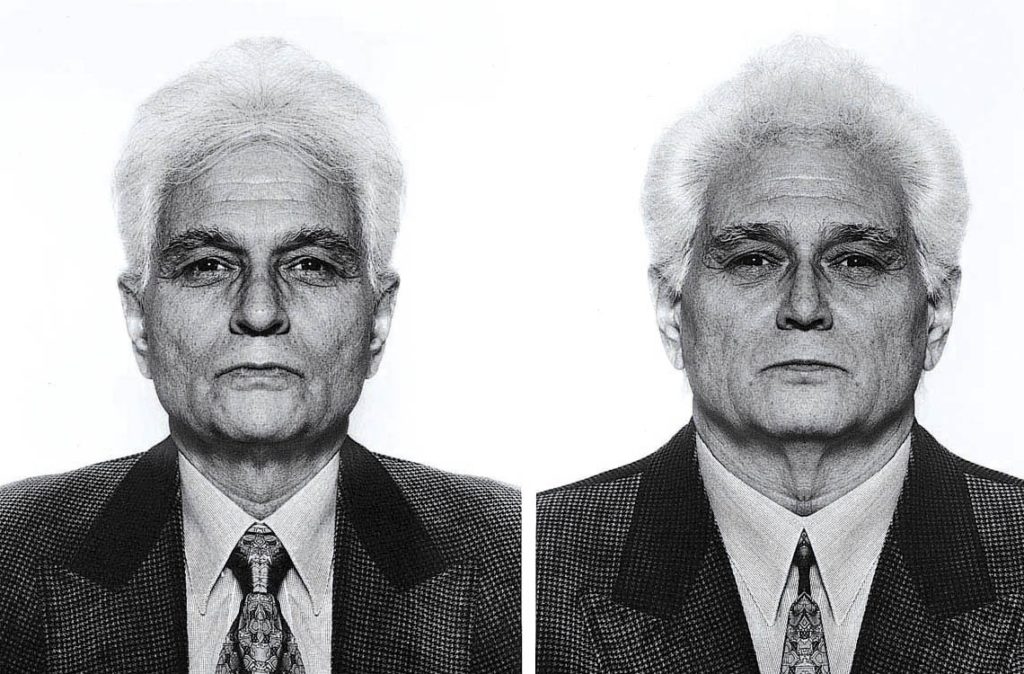
Jiri David, Jacques Derrida (1991-1995). Courtesy of the artist and Le Guern Gallery.
As part of the collaborations sector, Le Guern Gallery will team up with Zahorian & Van Espen to present a four-person exhibition of established and emerging artists based in Central-Eastern Europe. An installation of modified soccer and volleyballs by Pravdoliub Ivanov sit on a ledge in the back of the booth—a subtle variation on the readymade. Hanging nearby are uncanny black-and-white portraits of Allen Ginsberg and Jacques Derrida. They’re part Czech artist Jiři David’s “Hidden Images” series, in which he creates symmetrical composite head shots of famous artists and thinkers. Rounding out the small exhibition are a series of three-dimensional, formally-playful paintings by young artist Tomek Baran and three-legged bronze sculpture from Štefan Papčo.
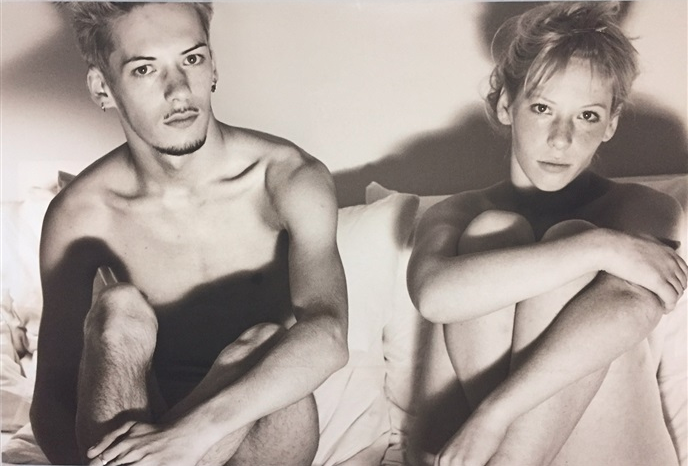
S&P Stanikas, Spring IV (2017). Courtesy of
S&P Stanikas.
One of only two galleries from the Baltics—and the sole representative from Lithuania—Galerija Vartai brings a collection of newer works by Svajonė and Paulius Stanikas, two of the most influential Lithuanian artists of their generation. Partners in art and life, the Stanikas’s have been collaborating together for almost three decades now. Their work comprises a variety of mediums, from photography and video to drawing and sculptures—sometimes all at once. A little bit of everything will be on view at the fair, all of which is united by a theme of the duo seeking connection with one another over time and space, in grief and political turmoil.
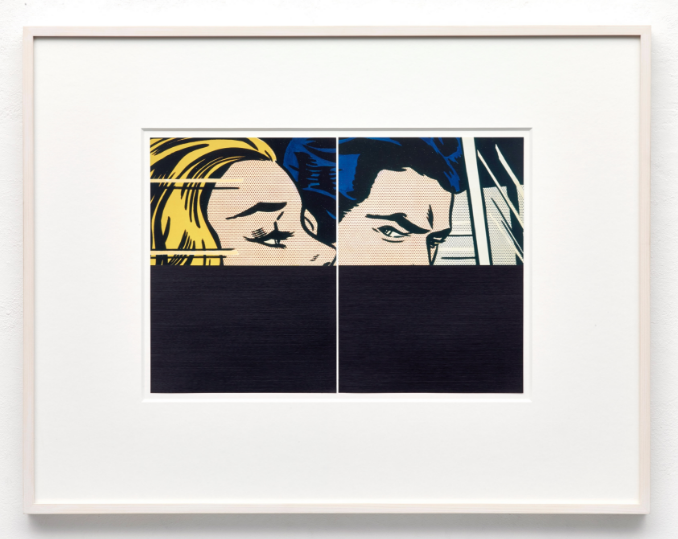
Frank Gerritz, In the Car (2014). Courtesy of Taguchi Fine Art.
Celebrating their 10th straight year at Art Cologne, Tokyo-based gallery Taguchi presents four German artists from its program. Frank Gerritz includes a body of work in which he has appropriated famous prints by artists like Warhol and Lichtenstein, and redacted or blocked out large portions of them with a black paint stick. They compliment a series of works on paper by Christiane Löhr, which feature overlapping blobs of black pastel that look like budding mold. Glowing, wall-mounted acrylic boxes by Regine Schumann recall Larry Bell, Craig Kauffman, and other Light and Space artists. Finally, a group of heavily-impastoed abstract paintings by Michael Toenges, which look like a painter’s palette mid-process, completes the booth.